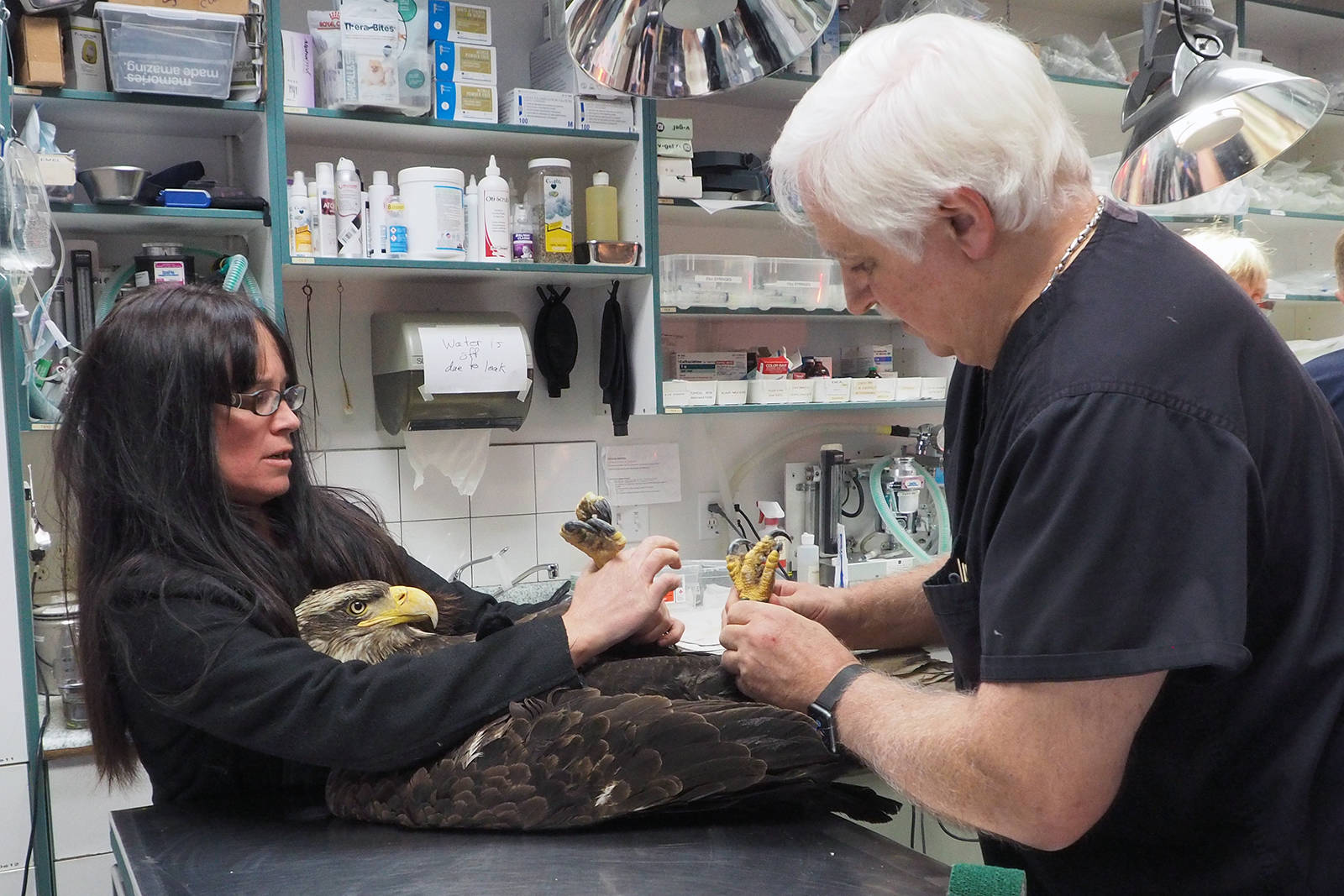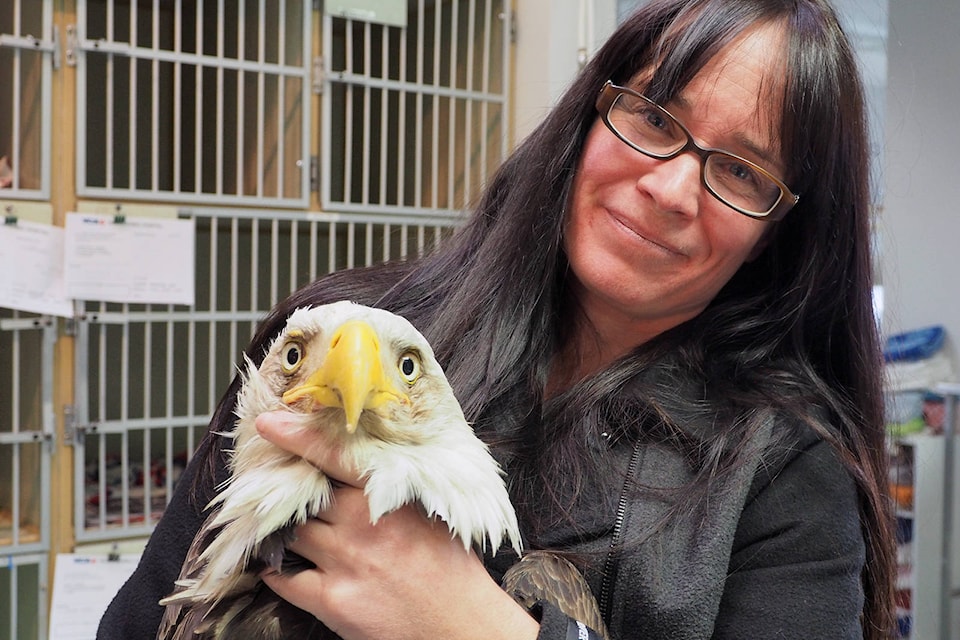Quick work to reverse the effects of euthanasia drugs saved the lives of several eagles on Vancouver Island this week.
Veterinarian Ken Langelier and his staff at Island Veterinary Hospital were busy preparing several eagles for release and recovery Tuesday. The birds became ill after they consumed large amounts of meat from the carcass of a deceased animal at the Nanaimo Regional Landfill.
The first bird was rushed to the clinic Sunday.
“I got a call from the Pacific Northwest Raptors, they do the bird abatement [at the landfill] to keep the birds under control, and they’d noticed an eagle had gone from standing to laying down and brought it in,” Langelier said. “The very first thing I noticed is it had low body temperature and was very unconscious. They thought it might have died.”
The bird had a slow heart rate and low blood pressure, but was still alive. Clinic staff emptied the bird’s crop and stomach contents and warmed it up. As Langelier worked to save that bird, several more were found and rushed in for treatment.
“A couple of birds we put on antibiotics because we thought they might have aspirated something,” Langelier said. “So it was mostly just keeping them alive by symptomatic treatment.”
One of the nine birds brought in to the clinic developed aspirated pneumonia and died. A tenth bird found ill was being brought into the clinic Tuesday morning.
“Everybody loves eagles, even the people at the landfill, and they’ve done a lot to help out, not only in this situation but any time there’s anything that they can see,” Langelier said.
He said, judging from the birds’ stomach and crop contents, it appeared the meat might have come from a pig that had been euthanized. Sodium pentobarbital, the drug used to carry out animal euthanasia, remains in the carcass at toxic levels, so euthanized animals must be buried or cremated to prevent contact with scavengers.
“The landfill wasn’t aware that an animal had been brought in that was that was euthanized,” Langelier said. “If people would just tell them, they have a special area that they use and they bury them immediately so there is no possible animal exposure.”
Tissue samples were taken from the consumed meat to determine what kind of animal it was, where it might have come from and possibly even find out who brought it to the landfill. Poisoning wildlife can result in criminal charges.
READ ALSO:
Langelier has treated previous eagle poisonings; the biggest was in 1988 involving nearly 30 birds. There were two separate poisoning incidents in 2019.
“It’s unfortunate [and] shouldn’t happen at all,” he said.
North Island Wildlife Recovery Centre in Errington is helping with the recovery and release of the birds, three of which will need ongoing care at the centre. Four birds will be released right away and possibly two of the birds will receive ongoing care with the Raptor Rescue Society in Duncan.
READ ALSO:
photos@nanaimobulletin.com
Like us on and follow us on




